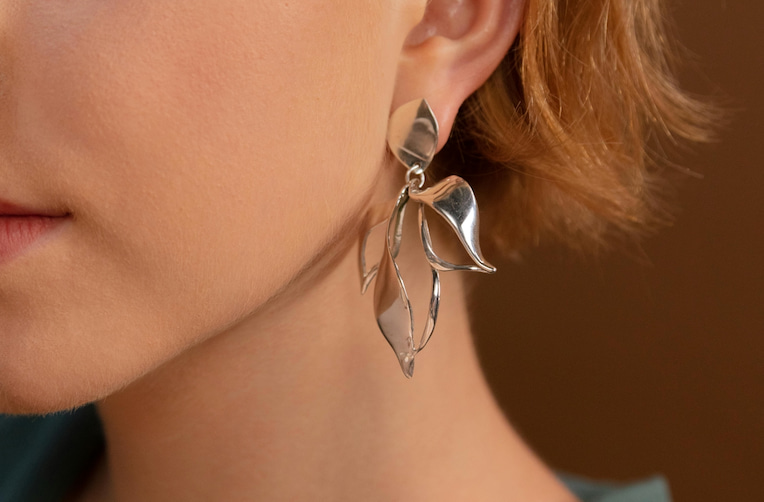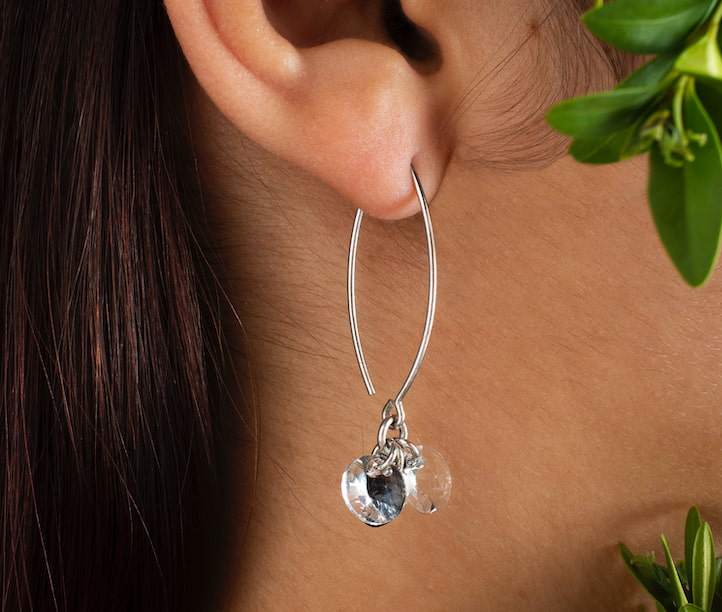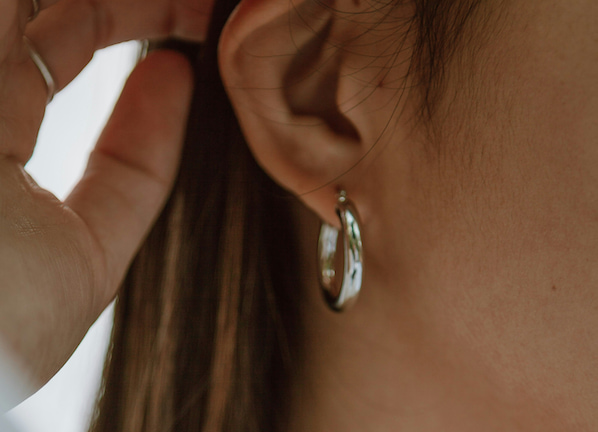Earrings are a popular accessory, but for many, wearing them can cause discomfort or allergic reactions. This is where hypoallergenic earrings come into play. But what are hypoallergenic earrings exactly and what metals do they use?
This guide delves into the meaning of hypoallergenic earrings, exploring the materials used in their production, and highlighting their benefits. We'll also discuss how to choose the right hypoallergenic earrings for your needs and share tips for their care.

Hypoallergenic earrings are designed with one primary goal in mind: to minimize the risk of allergic reactions. The term "hypoallergenic" itself means 'below normal' or 'slightly' allergenic, indicating that these earrings are less likely to cause allergic reactions compared to their standard counterparts.
Traditional earrings often contain nickel, a metal that, while durable and cost-effective, is a common allergen that can trigger reactions like redness, itching, or swelling. Hypoallergenic earrings, therefore, are crafted from materials that do not contain nickel or have very low nickel content, making them significantly less likely to irritate the skin.
So, what earrings are hypoallergenic? Here are some of the most commonly used materials in hypoallergenic earrings:
When asked "What is the most hypoallergenic metal for earrings?", titanium often stands out. Titanium is highly favored for its exceptional biocompatibility, meaning it is very rarely rejected by the body and causes minimal allergic reactions. This metal is corrosion-resistant, very strong, lightweight, and does not contain nickel. Its natural properties make it an ideal choice for anyone with sensitive skin or metal allergies, ensuring comfort and safety without compromising style.
Surgical stainless steel is another widely used material for hypoallergenic earrings. This material is often used in medical applications, including implants and surgical tools, due to its robustness and resistance to rust and corrosion. It contains a low amount of nickel, which is tightly bound and unlikely to leach out, reducing the risk of an allergic reaction. Grades 316L and 316LVM stainless steel are particularly known for their hypoallergenic properties.
Pure gold (24K) is generally hypoallergenic, but it is too soft for making durable jewelry. Higher karat gold (18K or higher) is often used in hypoallergenic earrings. It has a lower percentage of alloy metals, making it less likely to cause allergic reactions.
Note: Are gold-plated earrings hypoallergenic? While the gold plating itself is considered hypoallergenic if it's 18-karat gold or above, the base metal underneath the plating often contains allergens like nickel. Once the gold layer wears off, exposure to the underlying metal may lead to skin irritation or allergic reactions.
Platinum is a premium metal that is naturally hypoallergenic. It is durable, resistant to tarnish, and very unlikely to cause an allergic reaction, making it an excellent choice for hypoallergenic earrings.
Niobium is a rare metal that is naturally hypoallergenic. It is highly resistant to corrosion and does not react with skin, making it an excellent choice for those with metal allergies. Niobium earrings are often anodized to create a variety of colors without affecting their hypoallergenic properties.

Hypoallergenic earrings offer several advantages, especially for those with sensitive skin or metal allergies. Here are some key benefits:

Selecting the right hypoallergenic earrings involves more than just opting for any pair labeled as such. Here are essential tips to help you choose earrings that are both stylish and suitable for sensitive skin:
Proper care and maintenance can prolong the life of your hypoallergenic earrings and ensure they remain safe and comfortable to wear. Here are some tips for caring for your earrings:
To answer the query "What are hypoallergenic earrings?", we've explored the materials commonly used to make them, like titanium and stainless steel, and highlighted their benefits. Hypoallergenic earrings offer a safe solution for those with sensitive skin, reducing the risk of allergic reactions and allowing everyone to enjoy the beauty of jewelry without discomfort. By recognizing the common materials used and following the right selection and care techniques, you can enhance your accessory game without compromising your skin health.
To determine if earrings are hypoallergenic, check the material they are made from. Hypoallergenic earrings are typically made from titanium, surgical stainless steel, niobium, high-karat gold (18K or above), or platinum. Look for labels or certifications indicating that the earrings are hypoallergenic. Additionally, purchasing from reputable brands known for their hypoallergenic products can provide assurance of their safety.
Sterling silver earrings can be hypoallergenic, but it depends on the specific alloy. Sterling silver is an alloy made of 92.5% pure silver and 7.5% other metals, usually copper. While pure silver is hypoallergenic, the other metals in the alloy can cause allergic reactions in some people.
Stainless steel earrings, particularly those made from surgical stainless steel (grades 316L and 316LVM), are considered hypoallergenic. Surgical stainless steel contains a low amount of nickel that is tightly bound, making it less likely to leach out and cause an allergic reaction.
Learn how to fix stretched ear piercing with our guide. Discover effective repair methods, post-surgery care, and prevention tips to maintain healthy earlobes.
Read MoreDiscover how to buy diamond earrings with our expert guide. Learn about the 4 Cs, setting styles, best places to shop, and more to make an informed choice.
Read MoreLearn how to make pearl earrings with our DIY guide. Discover the tools needed and follow step-by-step instructions to create beautiful pearl jewelry at home.
Read MoreDiscover how to clean pearls safely and effectively with our guide. Learn the best methods and tips to maintain your pearls' natural luster and beauty.
Read More